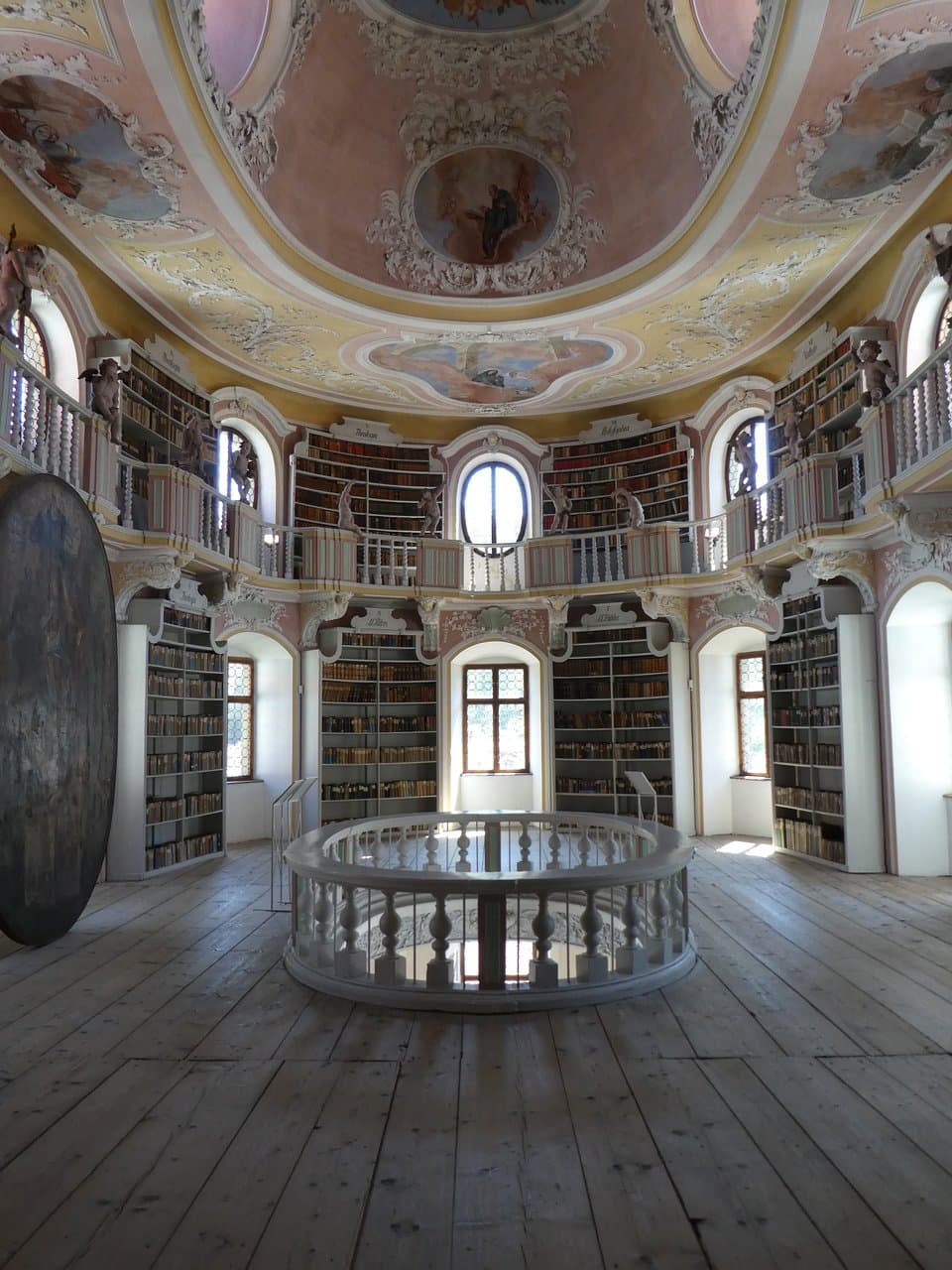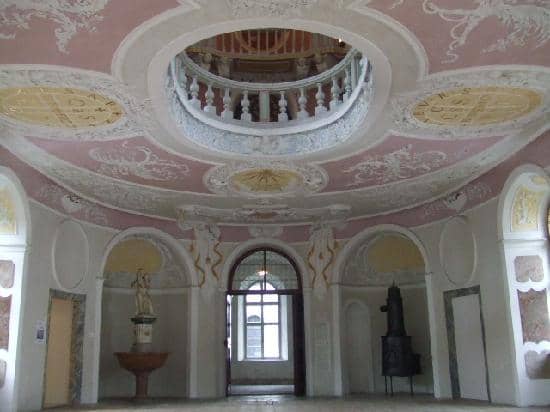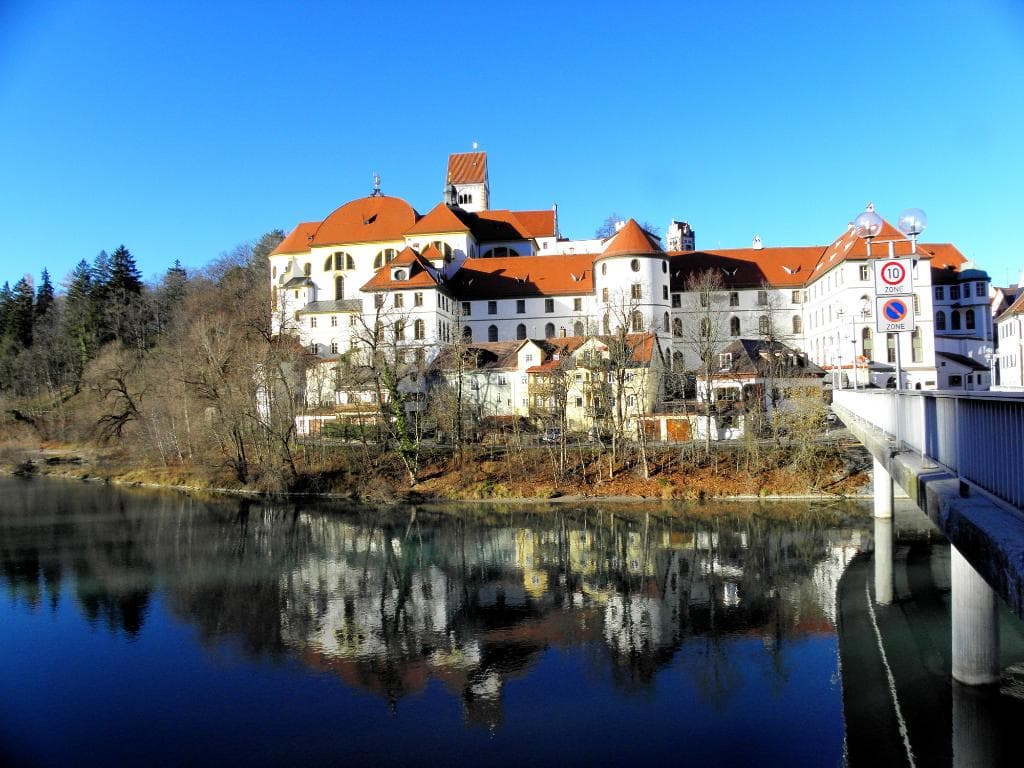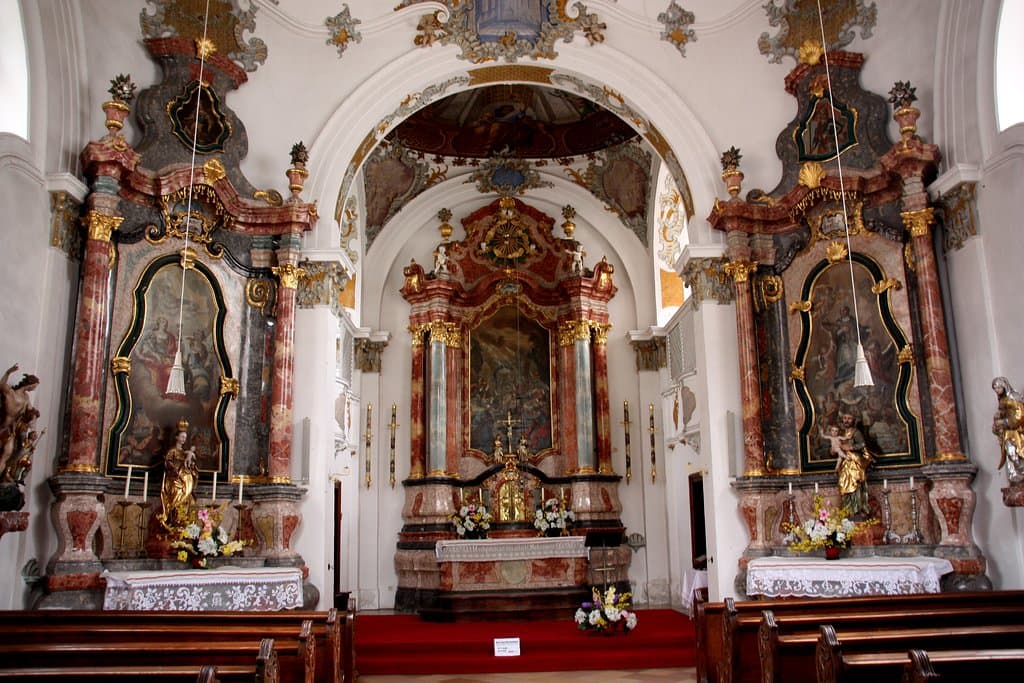
Museum of Füssen St Mang Abbey
Explore Füssen's rich history, from Roman times to Baroque splendor, with a focus on its musical heritage and stunning abbey architecture.

Highlights
Must-see attractions

Social
From TikTok & Reddit
Best Time
Museum is open

Museum of Füssen St Mang Abbey
Best Time
Museum is open

Highlights
Must-see attractions
Explore Füssen's rich history, from Roman times to Baroque splendor, with a focus on its musical heritage and stunning abbey architecture.
"The most beautiful museum I have ever been to, with unique and interesting exhibitions!"

Bring a translation app :iphone:
Most signs are in German. A translation app will greatly enhance your understanding of the exhibits.
Check winter hours carefully :clock1:
Winter hours are limited, often Fri-Sun 1-4 PM. Verify before you go!

Highlights
Discover the most iconic attractions and experiences

Baroque Library
St. Mang Abbey
Step into a stunning baroque library, a testament to Füssen's intellectual past. Its architecture is a highlight.

Violin Making History
Museum of Füssen
Explore the intricate history of violin making with a recreated workshop and fascinating displays on string instrument craftsmanship.

Imperial Hall
St. Mang Abbey
Marvel at the grandeur of the Imperial Hall, designed by master builder Johann Jakob Herkomer, a centerpiece of the abbey complex.

Roman Arcade Discoveries
Museum of Füssen
Uncover Füssen's ancient past with exhibits on geology and Roman discoveries, offering a glimpse into the region's early history.
Plans like a pro.
Thinks like you
Planning Your Visit
Check Opening Hours
Language Barrier & Audio Guides
Best Times
Insider Tips
from TikTok, Instagram & Reddit
Bring a translation app :iphone:
Most signs are in German. A translation app will greatly enhance your understanding of the exhibits.
Check winter hours carefully :clock1:
Winter hours are limited, often Fri-Sun 1-4 PM. Verify before you go!
Fussen Card discount :moneybag:
If you have a Fussen Card, you can get a 1€ discount on admission.
Dress warmly for the library :snowflake:
The baroque library can be quite cold, even in winter. Keep your jacket on!
Tips
from all over the internet
Bring a translation app :iphone:
Most signs are in German. A translation app will greatly enhance your understanding of the exhibits.
Check winter hours carefully :clock1:
Winter hours are limited, often Fri-Sun 1-4 PM. Verify before you go!
Fussen Card discount :moneybag:
If you have a Fussen Card, you can get a 1€ discount on admission.
Dress warmly for the library :snowflake:
The baroque library can be quite cold, even in winter. Keep your jacket on!
Allow about an hour :stopwatch:
This museum is small but packed with interesting items. An hour is usually sufficient for a good visit.
What Travellers Say
Reviews Summary
Visitors find the Museum of Füssen St Mang Abbey to be a unique and intellectually stimulating experience, particularly praising its stunning Baroque library and detailed exhibits on violin making. While the historical setting and diverse collections are highly appreciated, the primary drawback for international visitors is the lack of English signage, making a translation app or prior research highly recommended.
"Museum is 2 floors. u start with geology and roman arcade discovery. a chapel, baroque library, baroque study room, baroque imperial hall, violin history, hand made baroque cribs and much more to discover. very intellectual and fun to explore."
david antoun
"The signs are only in German, and they didn’t indicate there was an audio guide, so think a translation or tour app is pretty key for understanding the content. Even without those, the museum has a lot of interesting objects that are well displayed and laid out within this former Benedictine Monastery, such as the Dance of Death in Annakapelle painting, recreated violin making workshop, library’s architecture, seeing the inside of a small organ, the Kapitelsaal room’s paintings, and more."
Becky T
"Interesting little museum that’s connected to the St Mang Abbey (I think?) . Hours are very odd - in the winter, only open Fri-Sun from 1-4pm. You get a 1€ discount if you have a Fussen card. My favorite room was the library. It’s freezing cold in there, so keep your winter jackets with you. My main negative is all the info placards are in German, which I guess I can’t complain about, but it gets tiring to have to translate everything (as a non German speaking tourist) , so you end up just walking through and not learning a whole lot. There are 2 WC in the museum. Lots of mixture of what’s in it - lots about violin making; some old stones; library; religious items. Definitely worth stopping by tho if you have an hour."
Shannon E
What People Like
What People Dislike
Frequently Asked Questions
🚇 🗺️ Getting There
You can take a train from Munich Hauptbahnhof to Füssen, which takes about 2 hours. From the Füssen train station, it's a short walk to the museum. Consider using the Bayern Ticket for cost-effective travel, which includes train and bus tickets.
Yes, Füssen is well-connected by train, making it easily accessible from major cities like Munich. Buses are also available for local travel.
Yes, the museum is within walking distance from the Füssen train station, typically around a 20-minute walk.
Füssen is famously near Neuschwanstein Castle. You can also explore nearby lakes like Alpsee and Schwansee, or visit the Lechfall.
While public transport is recommended, there are parking options available in Füssen, though they can be busy during peak tourist seasons.
🎫 🎫 Tickets & Entry
Opening hours can be limited, especially in winter, often being Friday to Sunday from 1 PM to 4 PM. It's crucial to check the official website or local listings for the most current hours before your visit.
Admission fees are generally reasonable. Visitors with a Fussen Card can receive a small discount of 1€.
For this museum, advance booking is usually not required, but it's always a good idea to check if there are any special events or peak seasons that might necessitate it.
Yes, a 1€ discount is offered to visitors who possess a Fussen Card.
Information on accessibility can vary. It's recommended to contact the museum directly to inquire about specific facilities for visitors with disabilities.
🎫 🏛️ Onsite Experience
The museum features diverse exhibits including geology, Roman discoveries, a chapel, a baroque library, a study room, the Imperial Hall, and a fascinating section on violin making.
No, the information placards are primarily in German. Visitors who don't speak German may find it helpful to use a translation app or consider a guided tour if available.
It's not always clearly advertised, but it's worth inquiring at the ticket counter if an audio guide or tour information in English is available to enhance your understanding.
Many visitors highlight the stunning Baroque Library and the detailed exhibits on violin making as particularly captivating.
Most visitors find that about an hour is sufficient to explore the museum's collections thoroughly.
🎫 🎻 Musical Heritage
Füssen has a rich history in violin making. The museum showcases this heritage with a recreated violin making workshop and displays detailing the craft.
Yes, the museum features exhibits on the history of string instruments, including violins and lutes, offering insights into their construction and evolution.
You can learn about the town's significant contributions to musical instrument making, particularly violins, and explore ancient manuscripts and treatises related to music.
For Different Travelers
Tailored advice for your travel style
👨👩👧 Families with Kids
While the museum's content is intellectually rich, it's advisable to prepare children for the fact that most information is in German. Bringing a translation app or focusing on the visual aspects of the exhibits, like the grand Imperial Hall and the Baroque Library, can help make the visit more enjoyable. The museum is relatively compact, making it manageable for shorter attention spans, and generally takes about an hour to explore.
📚 History Buffs & Art Lovers
The museum delves into Füssen's past, from its Roman and geological origins to its significant role in the history of musical instrument making, especially violins. The collection of ancient manuscripts and treatises offers a glimpse into the intellectual life of the abbey. The 'Dance of Death' painting in Annakapelle is also noted as an interesting piece.
Deep Dives
In-depth insights and expert knowledge
The Abbey's Rich History
Visitors can explore various sections of the abbey, including a chapel, a baroque study room, and the impressive Imperial Hall, which was a central element of the monastery's design. The museum's collections span from ancient geological findings and Roman artifacts to religious items and historical documents, offering a comprehensive look at the region's past.
A key aspect of the abbey's legacy is its role as a hub of knowledge. The ancient library, a highlight for many visitors, was particularly active during the 17th and 18th centuries. Although the abbey was closed in 1803, the library's collection of unique works, manuscripts, and musical treatises has been preserved, allowing visitors to still feel the spirit of that learned era.
Exploring the Museum's Collections
A significant portion of the museum is dedicated to the history of violin making. This includes a recreated violin making workshop, allowing you to visualize the craftsmanship involved, and displays of various string instruments. The museum also showcases Füssen's musical heritage through ancient manuscripts and treatises.
Other notable areas include the Baroque Library, celebrated for its stunning architecture, the Baroque Study Room, the Imperial Hall, and displays of handmade baroque cribs. While the signage is primarily in German, the visual appeal of the exhibits and the unique historical context make it an intellectually stimulating and enjoyable experience.





Social
from TikTok, Instagram & Reddit